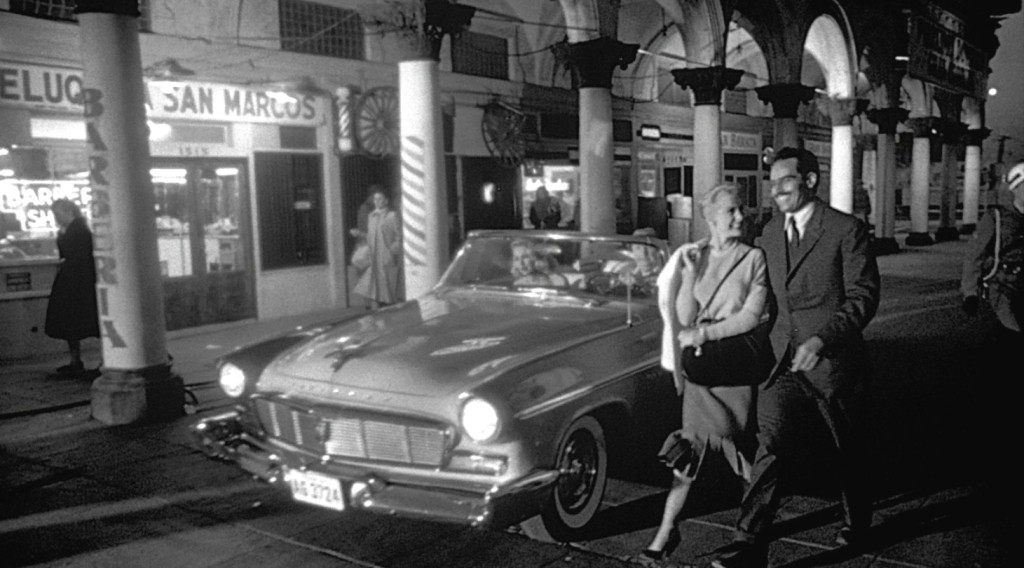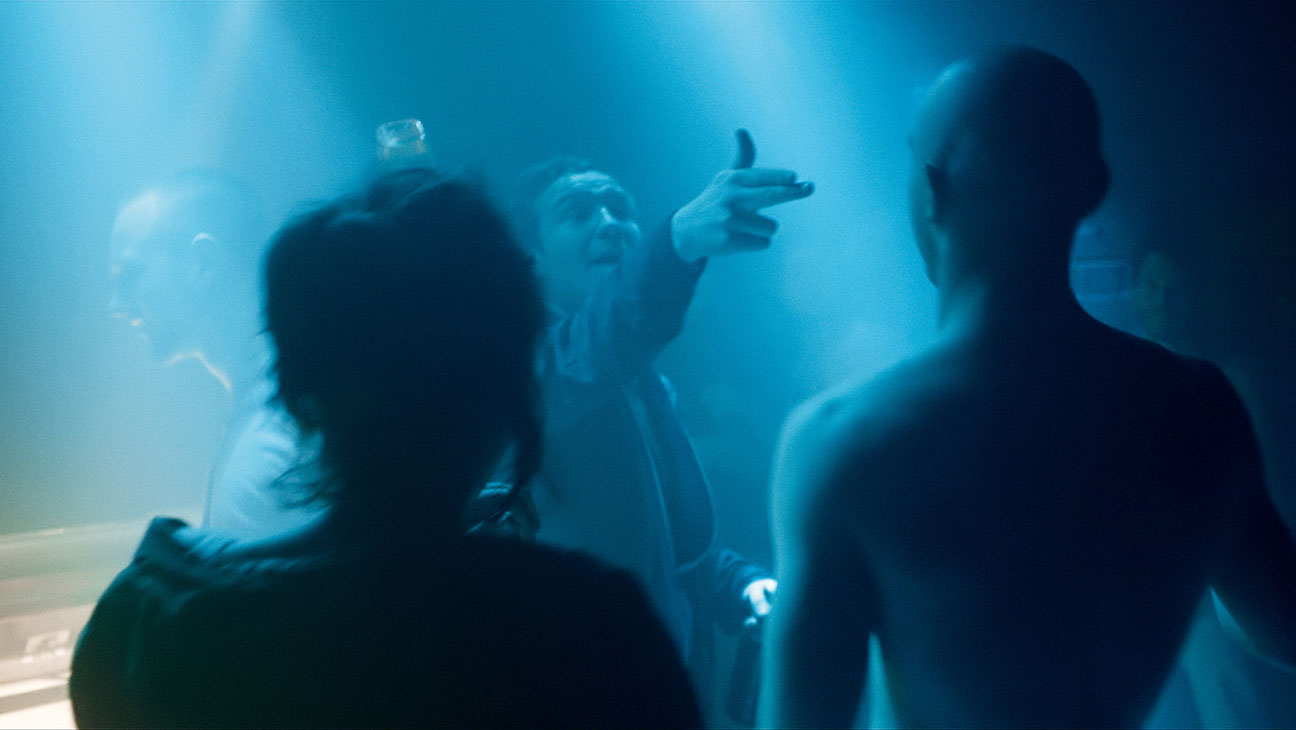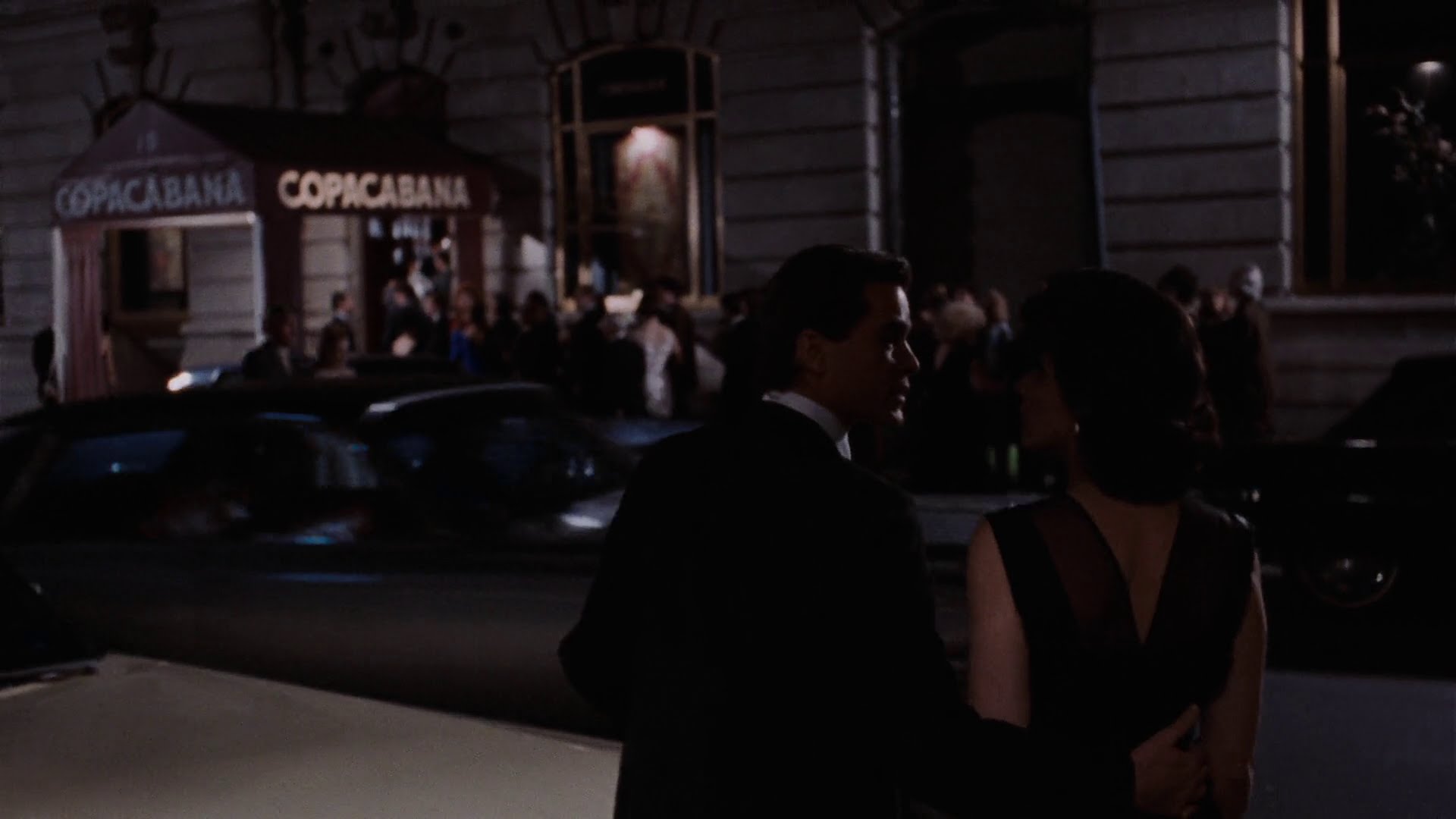5. Touch of Evil (Orson Welles, 1957) — Opening Scene

Orson Welles knew a thing of two about mise en scène. The opening sequence of Touch of Evil is one of the best moments in his filmography, expertly setting up the conflicts of the film through camera movement alone. Using a crane, it starts with a close-up of a bomb being set and put in the back of a car. Two people then get into the car and drive it through the streets, unaware of what may befall them.
It’s a cracking way to open the film, as we never know when the car may go off. But Welles is too clever for just that, panning towards another couple as they walk past the car with it then lurking behind them and constantly intersecting with them.
Then when the car finally does explode, it is timed exactly with our protagonist’s first kiss, showing the link between desire and destruction. Only then do we see the explosion in a cutaway. Film noir had never been staged quite so elegantly before or since.
4. Hard Boiled (John Woo, 1992) — Hospital Shootout

Climactic gun battles are a dime a dozen in cinema, but nothing beats the pure balletic ecstasy of the hospital shootout in Hard Boiled. Possibly seen more than the actual film itself, it shows John Woo at the height of his powers as an action choreographer. Featuring our two heroes — played by Chow Yun-fat and Tony Leung — rushing down a hallway and taking out scores of enemies coming from all sides, it blends slow motion sequences with whip pans and sudden explosions with devastating kills.
It works so well because it is not merely all fireworks, but has moments of quietness too, thanks to the use of a lift-break and Anthony’s belief that he killed a fellow cop. These two cops have been through the ringer throughout the film, these sequence really bringing to a head the themes of the movie. Often imitated by other filmmakers, and an inspiration for video game graphics and design, it is easily John Woo’s best moment as a filmmaker.
3. U-July 22 (Erik Poppe, 2018) — Entire Film

When this film premiered at Berlinale 2018, it was asked whether the subject matter was appropriate. Dramatising the awful terrorist attack by Anders Breivik on July 22, 2011, many argued that depicting the pain and suffering of helpless teenagers was simply too much. Nonetheless, the way that the film is made brings back some of the shock and fear of violence in a way that a million Hollywood movies — including Paul Greengrass’ inferior 22 July — couldn’t do.
Filmed all in one take, and never showing anything from the perspective of the killer himself, U-July 22 recreates the terror of knowing that you could die at any moment. Similar to Victoria, the hand-held camerawork brings a breathless immediacy to proceedings.
It’s as if we are in the mud and bushes with these kids, trying to avoid the merciless hand of the killer. It has a useful effect, especially when it comes to the gun debate. So often guns are a simple extension of a character, but here gun violence is rendered truly horrific, showing the need for sensible legislation everywhere.
2. Victoria (Sebastian Schipper, 2015) — Entire Film

At one point the longest continuous tracking shot of all time, Victoria’s conceit appears like a gimmick at first. Yet it is crucial to the narrative construction of the film, where a lot happens in only the space of 140 minutes.
Set in and around the centre of Berlin, it tells the story of a young Spanish expat (played with a great mixture of determination and naivety by Laia Costa) who meets four Germans outside of a techno club. Accompanying them on their adventure, she gets inadvertently roped into a criminal enterprise, turning a slice-of-life narrative into a nail-biting thriller.
The camerawork feels less like traditional filmmaking than war photography, at times struggling to keep up with the actors as they run and drive around the city. As so much happens so quickly, the single take is essential to make the story feel believable. The result is both touching and gripping, making Victoria much more than simply a mere gimmick.
1. Goodfellas (Martin Scorsese, 1990) — Copacabana Scene

Possibly the most famous single take scene of all time, and the first thing that comes to mind when somebody says “tracking shot”, the Copacabana scene in Goodfellas is the perfect introduction to the power and privilege of the mafioso life. Teaming up with legendary cinematographer Michael Ballhaus, the three-minute sequence tells you everything you need to know about how Henry Hill is viewed within the upper echelons of the gangster world.
It starts with him and his new girlfriend Karen Friedman leaving their car in the street and walking through the back entrance to New York’s legendary nightclub instead of queueing up with the regular folk. From there they go through the kitchen, bumping into various regulars before a table is made specifically for them right next to the stage.
What makes the scene so brilliant is the acting by Ray Liotta and Lorraine Bracco. While Henry is cool and confident — giving nearly everyone he passes a little cash tip — Karen is completely bewildered, marking her first introduction to the world of heady privilege.
Therefore, its not just a question of showing off, but setting up future conflict between the two once the shit hits the fan. All accompanied by The Crystal’s “And Then He Kissed Me”, it’s a standout moment in a film with no boring scenes.